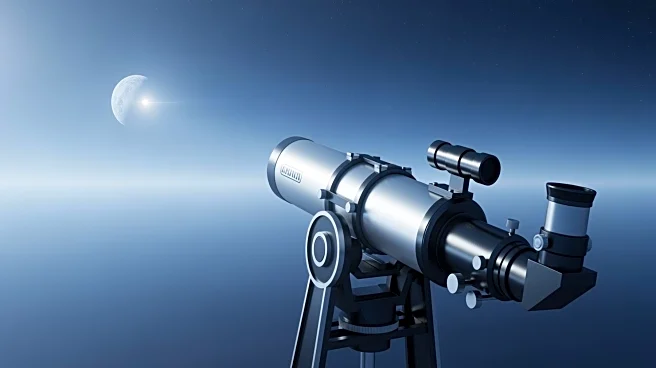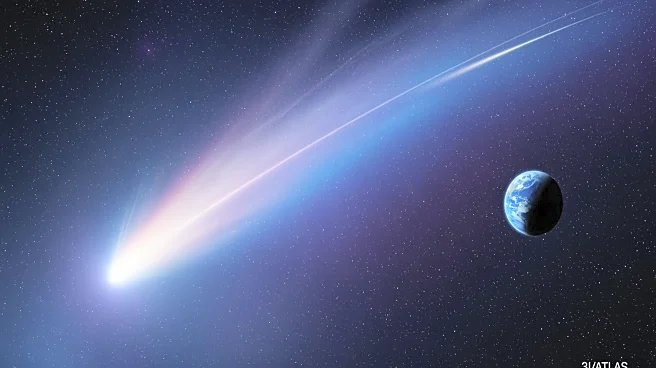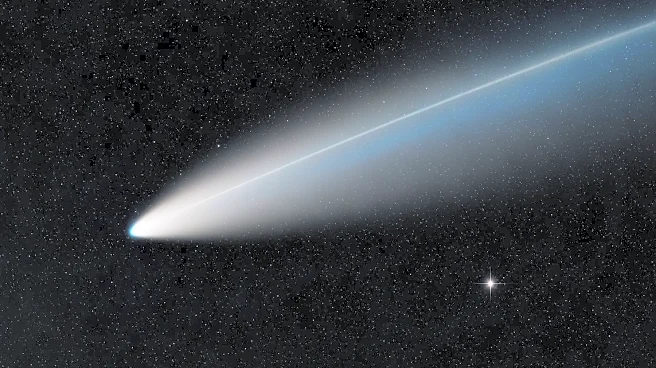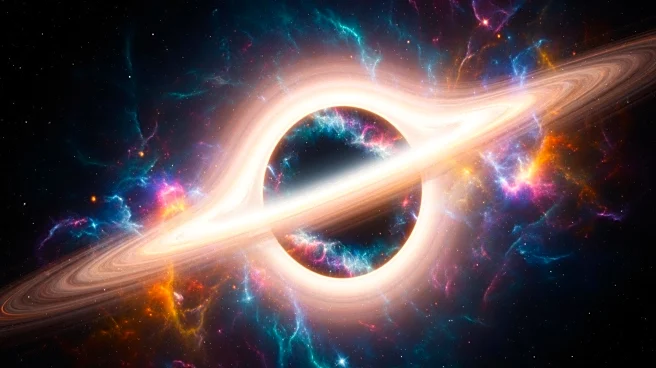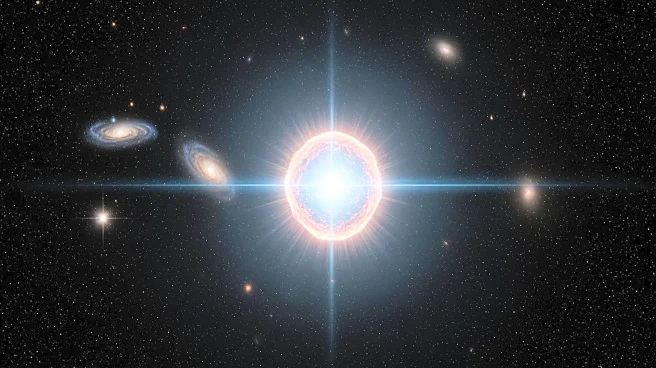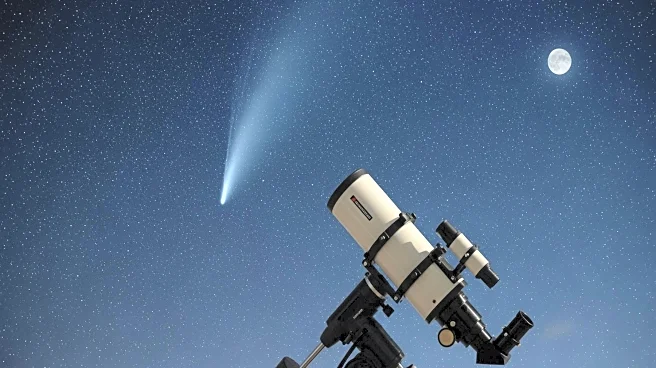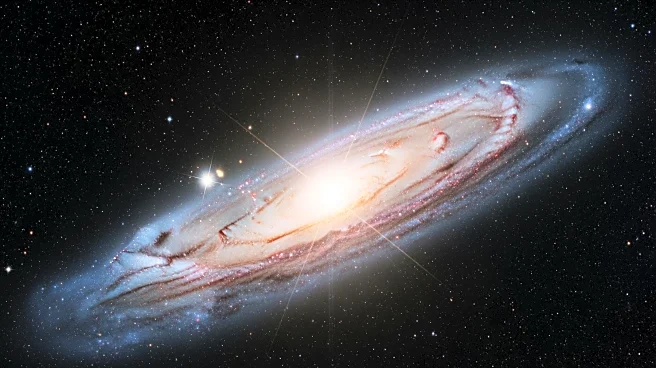What's Happening?
The Hubble Space Telescope has captured a detailed image of the spiral galaxy NGC 3370, located in the constellation Leo. This observation marks over two decades since Hubble first studied this galaxy, which is part of a small group of galaxies. The image showcases
the galaxy's spiral arms and central bulge, rich with stars, gas, and cosmic dust. NGC 3370 is situated 90 million light-years away and is home to Cepheid variable stars and Type Ia supernovas. These celestial landmarks are crucial for astronomers to measure cosmic distances and understand the universe's expansion. By comparing the brightness of these objects as seen from Earth with their actual brightness, scientists can calculate distances and contribute to the cosmic distance ladder, a framework essential for understanding cosmic scale and motion.
Why It's Important?
The detailed image of NGC 3370 captured by the Hubble Space Telescope is significant for several reasons. It provides astronomers with valuable data to study galaxy formation and evolution, offering insights into how galaxies interact and influence each other over time. The presence of Cepheid variable stars and Type Ia supernovas in NGC 3370 allows for precise measurements of cosmic distances, which are fundamental to understanding the rate of the universe's expansion. This contributes to the broader field of cosmology, helping scientists refine models of the universe's history and future. The ongoing observations by Hubble continue to enhance our knowledge of the universe, supporting research that impacts various scientific disciplines.
What's Next?
Future observations and studies of NGC 3370 and similar galaxies will likely continue to refine our understanding of cosmic distances and the universe's expansion. As technology advances, astronomers may employ new methods and instruments to gather more detailed data, potentially leading to breakthroughs in cosmology. The Hubble Space Telescope's ongoing mission will persist in capturing images and data that contribute to the scientific community's efforts to unravel the mysteries of the universe. Collaborative research with other telescopes and observatories may also enhance the scope and depth of these studies.
Beyond the Headlines
The study of galaxies like NGC 3370 not only advances scientific knowledge but also raises philosophical and cultural questions about humanity's place in the universe. As astronomers uncover more about the cosmos, it challenges our understanding of existence and inspires curiosity and exploration. The ethical considerations of space exploration and the allocation of resources for such endeavors may also come into play, influencing public policy and international cooperation in the field of astronomy.


